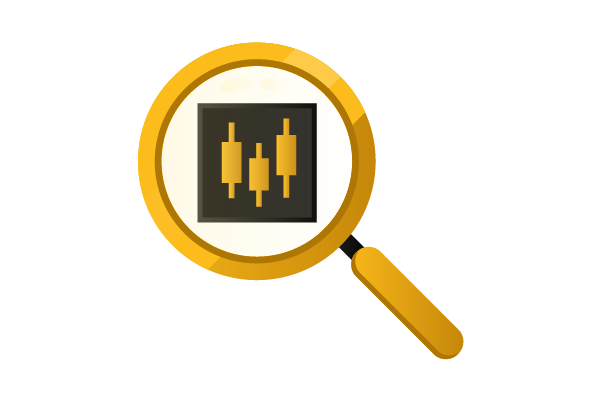In the fast-paced world of financial markets, traders are always on the lookout for tools and strategies to gain an edge. One such powerful tool that has stood the test of time is Candlestick Trading.
This proprietary program harnesses the age-old wisdom of candlestick chart patterns to illuminate market analysis, helping traders make informed decisions and navigate the complexities of trading. In this article, we’ll dive deep into Candlestick Trading, exploring what it is, how it works, and why it remains a crucial component of modern trading strategies.
What is Candlestick Trading?
Candlestick Trading, tracing its origins to 17th-century Japan and popularized by Steve Nison in the 1980s, is a charting technique that leverages candlestick charts to visually represent price movements. Each candlestick tells a story about price action, with its components—the open, close, high, and low prices—forming the body and wicks. The brilliance of Candlestick Trading lies in its ability to decode market sentiment and potential trend reversals by identifying patterns such as doji, hammer, shooting star, and engulfing patterns.
These patterns offer valuable insights into market psychology and whether buyers or sellers are in control. For example, a doji pattern, characterized by a small body and long wicks, suggests indecision in the market and often occurs at potential reversal points. On the other hand, a “hammer” candlestick typically appears at the bottom of a downtrend, signifying a potential bullish reversal as buyers overcome selling pressure. The “shooting star” is a bearish pattern that appears at the end of an uptrend, indicating possible downward momentum.
In the ever-evolving world of finance, Candlestick Trading remains a beacon of knowledge that empowers traders to navigate the complexities of the markets. It offers a profound understanding of price dynamics and trading opportunities, whether you’re a seasoned trader or just starting your journey in the world of finance. As we delve deeper into this technique, you’ll discover how mastering Candlestick Trading can illuminate your path to success in the financial markets, enabling you to make well-informed trading decisions with confidence.
Also Read: Commodities Technology: Innovations in Trading and Management
Deciphering Candlestick Trading Patterns
 1. Understanding Candlestick Patterns
1. Understanding Candlestick Patterns
To become proficient in Candlestick Trading, it’s crucial to have a comprehensive understanding of various candlestick patterns. These patterns are visual representations of price movements and are instrumental in gauging market sentiment. From simple single-candlestick patterns like the doji to complex multi-candlestick formations, each carries its own significance.
For example, the “Doji” signifies market indecision, suggesting that neither buyers nor sellers have a clear advantage. “Bullish Engulfing” and “Bearish Engulfing” patterns represent shifts in market sentiment. “Hammers” and “Shooting Stars” signal potential reversals. Learning to recognize and interpret these patterns is fundamental to successful Candlestick Trading.
2. The Doji: A Sign of Indecision
The Doji is a fascinating pattern due to its small real body, which means that the opening and closing prices are nearly identical. This often occurs during periods of market indecision when neither bulls nor bears can establish dominance. There are several variations of the Doji, such as the “Gravestone Doji” and “Dragonfly Doji,” each carrying its nuances and implications.
Traders must not only identify the Doji but also consider its context within the broader price action. For instance, a Gravestone Doji at a resistance level may indicate a potential bearish reversal, while a Dragonfly Doji at support could suggest a bullish reversal.
3. Hammers and Shooting Stars
Hammers and shooting stars are potent reversal patterns that can offer valuable insights into potential trend shifts. The “Hammer” appears after a downtrend and signals a potential bullish reversal. It derives its name from its appearance—a small real body with a long lower shadow that resembles a hammer.
The “Shooting Star” is a bearish reversal pattern that emerges at the end of an uptrend. It features a small real body with a long upper shadow, resembling a star falling from the sky. Recognizing these patterns is just the beginning; traders must also consider factors like volume and recent price action for confirmation.
4. Engulfing Patterns
Bulls vs. Bears: Engulfing patterns, whether bullish or bearish, are pivotal in Candlestick Trading. A “Bullish Engulfing” pattern occurs when a large bullish candle completely engulfs the prior bearish candle, signalling a shift in favor of buyers. Conversely, a “Bearish Engulfing” pattern suggests a change in sentiment as a large bearish candle engulfs the preceding bullish one. The size and significance of these patterns depend on factors like the prevailing trend and market context. Traders must assess the strength of the engulfing pattern by considering factors such as volume and support/resistance levels.
5. Morning and Evening Stars
These three-candlestick patterns provide valuable information about potential reversals. The “Morning Star” is a bullish reversal pattern consisting of a bearish candle, followed by a small candle (often a doji or spinning top), and then a bullish candle. It implies a shift from bearish to bullish momentum.
Conversely, the “Evening Star” is a bearish reversal pattern featuring a bullish candle, followed by a small candle, and then a bearish candle, indicating a potential transition from bullish to bearish sentiment. Traders must recognize these patterns and assess their relevance within the broader market context.
6. Candlestick Combinations
While individual candlestick patterns are powerful, their significance multiplies when combined. Traders often seek confirmation by identifying multiple patterns or using them in conjunction with technical indicators and support/resistance levels.
For example, a “Bullish Engulfing” pattern followed by a “Hammer” reinforces the potential for a bullish reversal. Recognizing these combinations enhances the precision of trading decisions and risk management. Traders should also consider the time frame in which these patterns occur, as they can carry different meanings in various time frames.
7. Confirmation with Volume and Indicators
Successful Candlestick Trading involves confirming signals with other tools. Volume analysis plays a crucial role in confirming the validity of candlestick patterns. For instance, a bullish pattern accompanied by a surge in trading volume strengthens the bullish case.
Technical indicators like the Relative Strength Index (RSI) or Moving Averages can also provide confirmation signals. The synergy between candlestick patterns, volume, and indicators improves the reliability of trade setups. Traders should pay attention to divergences between candlestick patterns and indicators, as they can offer valuable insights.
8. Pattern Recognition and Practice
Proficiency in Candlestick Trading requires practice and exposure to real market conditions. Traders should regularly review historical price charts, identify patterns in live markets, and execute trades based on their analysis. Over time, pattern recognition becomes intuitive, enabling traders to make timely decisions with confidence.
Ongoing practice and refinement of skills are essential for consistently successful Candlestick Trading. Additionally, keeping a trading journal to document successful and unsuccessful trades based on candlestick patterns can help traders learn from their experiences and continuously improve their trading strategies.
By delving into these aspects of Candlestick Trading Patterns in greater detail, traders can develop a comprehensive understanding of this powerful analysis tool. This understanding enhances their ability to interpret market dynamics accurately, make informed trading decisions, and adapt to changing
Applying Candlestick Trading Techniques
 Candlestick trading techniques are instrumental in deciphering market sentiment and identifying potential trend reversals or continuations. One fundamental technique is pattern recognition, where traders analyze the formation of candlestick patterns to make informed decisions. Bullish patterns like the Hammer, Morning Star, or Bullish Engulfing indicate potential price appreciation, while bearish patterns such as the Shooting Star, Evening Star, or Bearish Engulfing suggest possible downturns. Traders also consider the significance of these patterns within the broader context of the price chart, such as their location in a prevailing trend or near key support and resistance levels.
Candlestick trading techniques are instrumental in deciphering market sentiment and identifying potential trend reversals or continuations. One fundamental technique is pattern recognition, where traders analyze the formation of candlestick patterns to make informed decisions. Bullish patterns like the Hammer, Morning Star, or Bullish Engulfing indicate potential price appreciation, while bearish patterns such as the Shooting Star, Evening Star, or Bearish Engulfing suggest possible downturns. Traders also consider the significance of these patterns within the broader context of the price chart, such as their location in a prevailing trend or near key support and resistance levels.
Moreover, understanding candlestick patterns’ psychology is essential. For instance, a Doji candle signals market indecision, and when it appears after a strong uptrend or downtrend, it may foreshadow a reversal. Combining candlestick patterns with other technical indicators like moving averages, RSI, or Fibonacci retracements can enhance their reliability. Additionally, time frames play a crucial role, as patterns may hold different meanings on various time frames, necessitating a comprehensive analysis.
Risk management is paramount when applying candlestick trading techniques. Traders must establish stop-loss orders to limit potential losses and employ proper position sizing to safeguard their capital. Continual learning, practice, and a disciplined approach are essential to mastering candlestick trading techniques and successfully navigating the dynamic world of financial markets.
Combining Candlestick Trading Analysis with Technical Tools
 1. Moving Averages and Candlestick Patterns
1. Moving Averages and Candlestick Patterns
Moving averages are fundamental technical indicators used in conjunction with candlestick patterns for trend confirmation and reversal signals. Traders often utilize two moving averages – a shorter-term and a longer-term one. When the shorter-term moving average crosses above the longer-term moving average, it generates a “Golden Cross,” signaling a potential bullish trend.
Conversely, a “Death Cross,” when the shorter-term moving average crosses below the longer-term one, suggests a bearish trend. Combining these moving average crossovers with bullish or bearish candlestick patterns can provide robust trade setups, as they align trend direction with specific price action signals.
2. Relative Strength Index (RSI) and Overbought/Oversold Conditions
RSI is a momentum oscillator that measures the speed and magnitude of price changes. It oscillates between 0 and 100, with readings above 70 indicating overbought conditions and readings below 30 suggesting oversold conditions. Traders often combine RSI with candlestick patterns to spot potential reversals.
For example, a bearish candlestick pattern forming in the overbought zone could signal a bearish reversal, while a bullish pattern in the oversold zone may indicate a potential bullish reversal. This synergy helps traders confirm their entries and exits.
3. Fibonacci Retracement and Candlestick Patterns
Fibonacci retracement levels, based on the golden ratio, are used to identify potential support and resistance levels. When combined with candlestick patterns, they enhance the precision of trade entries.
Traders look for candlestick patterns that coincide with key Fibonacci retracement levels (e.g., 38.2%, 50%, or 61.8%). Such alignments can provide strong confluence and increase the likelihood of a successful trade. Additionally, traders may use Fibonacci extensions to set profit targets based on candlestick-driven entries.
4. Bollinger Bands and Volatility
Bollinger Bands consist of a central moving average and two outer bands that represent standard deviations from the average. They expand and contract based on market volatility. Combining Bollinger Bands with candlestick patterns helps traders gauge price volatility and potential reversals.
For instance, when a bullish candlestick pattern forms near the lower Bollinger Band, it suggests potential price reversal to the upside, especially if confirmed by other technical tools. Similarly, a bearish pattern near the upper Bollinger Band may indicate a reversal to the downside.
5. MACD (Moving Average Convergence Divergence) and Histogram
The MACD is a versatile indicator that includes the MACD line and the signal line, along with the MACD histogram. It helps traders identify changes in trend momentum. When used alongside candlestick patterns, traders look for bullish or bearish crossovers between the MACD line and the signal line.
When a bullish candlestick pattern coincides with a bullish MACD crossover or histogram uptick, it strengthens the case for an impending uptrend. Conversely, a bearish pattern combined with bearish MACD signals can indicate a potential downtrend.
6. Ichimoku Cloud and Trend Confirmation
The Ichimoku Cloud is a comprehensive indicator that provides insights into support and resistance levels, trend direction, and momentum. When combined with candlestick patterns, traders gain a clearer understanding of trend strength.
For example, a bullish candlestick pattern forming above the cloud reinforces a bullish bias, as it suggests potential support from the cloud. Conversely, a bearish pattern below the cloud may indicate a stronger bearish sentiment.
7. Stochastic Oscillator and Divergence
The Stochastic Oscillator measures the relative position of a closing price within a specified price range. Traders often use it to identify divergence between the oscillator and price movement, which can signal potential reversals.
When divergence aligns with a relevant candlestick pattern, it strengthens the trade setup. For instance, a bullish candlestick pattern combined with bullish divergence in the Stochastic Oscillator can be a powerful signal for a potential bullish reversal.
8. Volume Confirmation
Volume is a crucial tool for confirming or negating candlestick signals. High volume during the formation of a candlestick pattern validates its significance. Traders assess whether the volume aligns with the direction implied by the pattern.
For instance, a bullish reversal pattern accompanied by a surge in volume suggests strong buying interest and reinforces the bullish outlook. On the contrary, low volume during a pattern formation might indicate caution.
By understanding how to combine candlestick trading analysis with these technical tools, traders can enhance their ability to make well-informed trading decisions. This comprehensive approach allows for a more thorough assessment of market conditions and improves the accuracy of trade setups. However, it’s essential for traders to practice and refine their skills continuously to effectively utilize these tools in real trading scenarios.
The Enduring Relevance of Candlestick Trading
Candlestick Trading, despite its centuries-old origins, continues to hold a significant and enduring place in the world of financial markets. Its timeless relevance lies in its ability to distil complex market information into visually interpretable patterns that encapsulate market sentiment. These patterns, with their evocative names like Doji, Harami, and Shooting Star, serve as a common language for traders worldwide, transcending cultural and linguistic barriers.
Also Read: Day Trading: A Comprehensive Guide for Aspiring Traders
One key aspect of Candlestick Trading’s longevity is its adaptability. Traders have seamlessly incorporated these patterns into modern technical analysis, integrating them with sophisticated tools like moving averages, oscillators, and Fibonacci retracements. Candlestick patterns provide valuable insights into potential price reversals, trend continuations, and areas of price congestion, allowing traders to make well-informed decisions.
Moreover, Candlestick Trading’s enduring appeal can be attributed to its versatility across different asset classes and time frames. Whether applied to stocks, currencies, commodities, or cryptocurrencies, these patterns retain their effectiveness. Furthermore, they offer valuable insights on various time frames, from the intraday to the weekly and monthly charts.
Conclusion
Candlestick Trading is more than just a historical charting technique; it’s a dynamic and indispensable tool for modern traders. By decoding the language of candlestick patterns, traders gain a deeper understanding of market psychology and can make more informed decisions.
Whether you’re a seasoned trader or just starting in the world of finance, incorporating Candlestick Trading into your toolkit can shed light on the path to successful trading strategies. Stay tuned as we explore more about this fascinating topic in the following sections.

